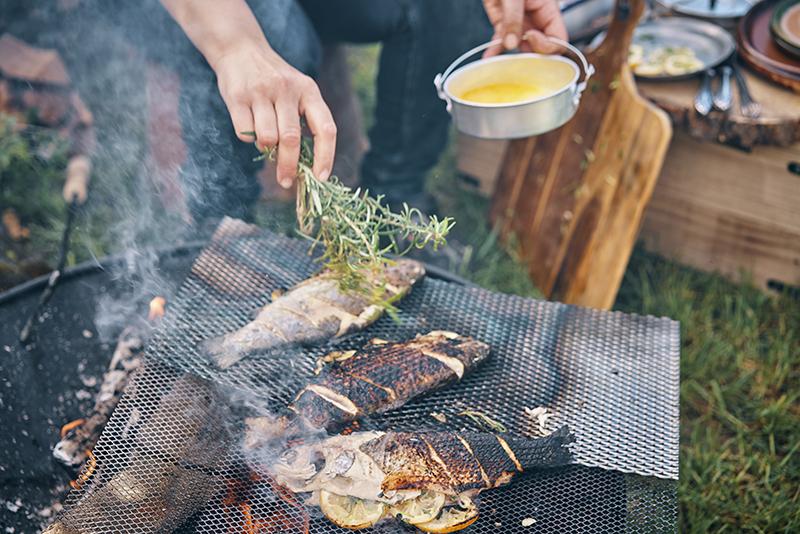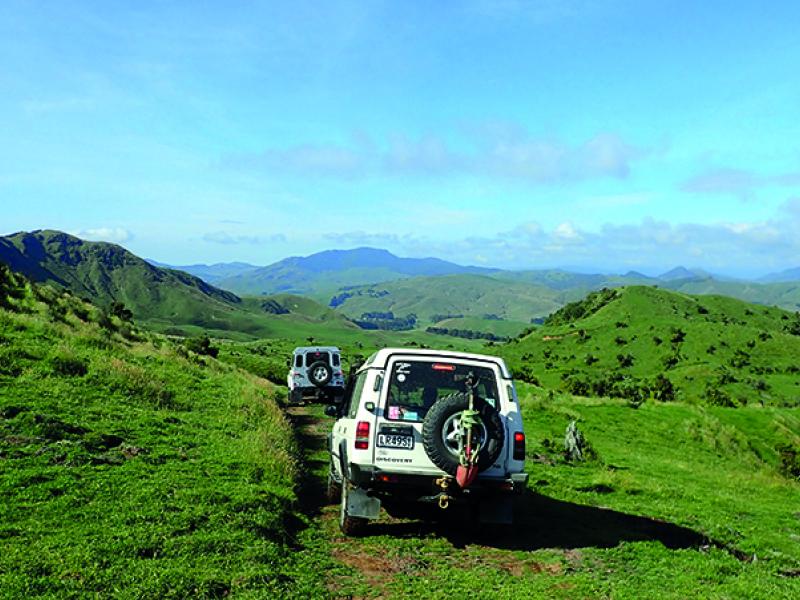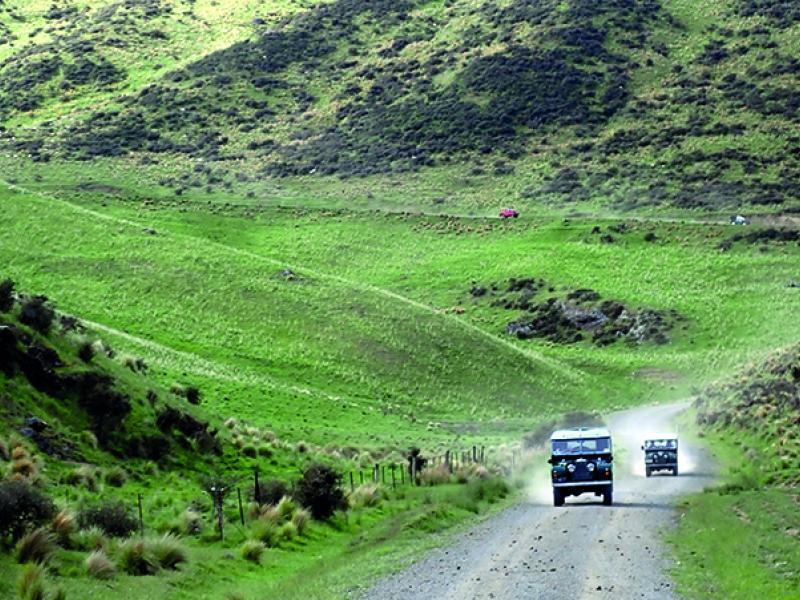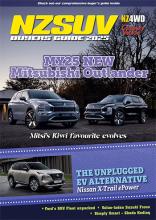Eating well in the backblocks, in the bush, at the beach
Hard on the heels of the Fellers family’s Pajero-based camp kitchen, contributor Richard Soult shares his tried and trusted outdoor cooking setup and a couple of recipe ideas.
When we’re away doing the tracks, meeting people and getting to great places, one thing remains extremely important: food!
I love overlanding as much as I do sailing. Having spent nearly 20 years living in France, I also love cooking and the conviviality of cooking for friends and sharing a meal together. It’s one of those really special interactions, particularly when you’re out somewhere truly remote where the fresh air and physical activity make everything you create taste great. What is better than enjoying a meal in stunning surroundings, discussing the day’s activities and what the forthcoming day will bring.
So what do we use at 4x4Explorer?
First up, the gear we cook with and what we cook has been refined over many years outdoors.
Depending on the circumstances, our cooking varies. We always carry plenty of dry and tinned food. If we arrive late at camp, we might just heat up a tin of soup with a bread roll.
We’ve also found that the wok is great. Chop up some meat and vegetables, heat the wok, throw it all in and you’ve got a great meal in no time. We always carry some oyster sauce and sesame oil to give a little bit of extra flavour.
Gas Cookers
The most basic are two gas cookers from the Warehouse. These are really cheap, circa $25, and do most things. Gas is also very cheap and we always have a large stock on board, bringing back the overlanding concept of self-sufficiency. We also have a cast iron hot plate that we can use as a “plancha” or BBQ, great for grilling meat, vegetables and seafood. Having an ‘outdoor’ fridge enables us to keep all our ingredients fresh and means we can cook more than is needed for a single meal and keep left over food for another day.
For lunch, we often make sandwiches or the famous 4x4Explorer burgers. I normally make these from scratch before a trip and in the fridge they are good for a week.
We carry a wok, frying pan, a large sauce pan and a smaller pan for boiling water. We don’t carry a kettle, because space is limited and every item has to be multi-functional.
There are some drawbacks with these gas cookers. They don’t tend to last very long with the amount of use that we give them.
Being a gas cooker, they are susceptible to wind and we use a folding wind shield to keep the flame going outdoors.
These two gas cookers are what we use most.
The biggest disadvantage with them is poor performance in cold temperatures. There have been many occasions in the winter where the temperature was well below 0°C and these cookers just won’t work. The gas cylinders become too cold and lose pressure. A trick is to keep the gas cylinder warm, either in your clothing or in the vehicle with the heater on. I have a number of friends who use LPG and apparently this is far more effective in very cold temperatures.
On a recent trip away, a friend had a double gas cooker using LPG and it was much more powerful than my cheap Butane cookers. Somewhere in the garage I have a CampinGaz dual burner that I used in France; I’m seriously thinking of digging it out. I just need to see if it will fit nicely into the drawer system in the back.
BBQ
Now if we’re staying somewhere where a fire is permitted, that’s where the BBQ comes into its own. Who doesn’t love a BBQ? It’s a primeval thing……Man gets meat, builds fire and cooks for woman (just joking)
My friend Aaron Rich put me onto a brand of BBQ sold by Fox Outfitters. It’s a fantastic piece of kit that folds up small, takes seconds to set up and is just brilliant! It’s a true BBQ and once the cooking is done we can throw on some wood and make a wee campfire.
I really don’t think that there is anything better than a BBQ, in a remote spot, alone with that special one, or a few mates, and a few cold ones.
Camp Oven
The third option that we have for cooking is a “camp oven”. This is basically a cast iron pot with a lid, which cooks slowly in the ashes of a campfire. A lot of my friends are hunters and quite often come away with a stash of venison. If we have time, we will light a fire, wait for the fire to burn down to bright embers and slow cook a stew. Again, it’s very simple! Chop some meat and vegetables, add some wine, herbs and cook for a few hours. The slow cooking really helps to soften the meat and is always a favourite eaten under the stars.
I lived in Burgundy for ten years, so one of my favourites is a Beef Bourguignon. Lamb shanks are also great, slow cooked.
Camp ovens can be used for anything. Just put it all in the pot and wait for it to cook. Most camp ovens have a ridge on the lid so that you can add embers to the lid to get an all-round heat.
Food is one of life’s greatest pleasures and particularly when you’re out “bush”. Because we spend so much time out overlanding, we like our comforts.
I hope that this article inspires people to develop their own camp kitchens and try out some new ideas for meals in wild places.
Perhaps we’ll meet out there on the trails and can share a stir fry, BBQ or slow cooked stew.







